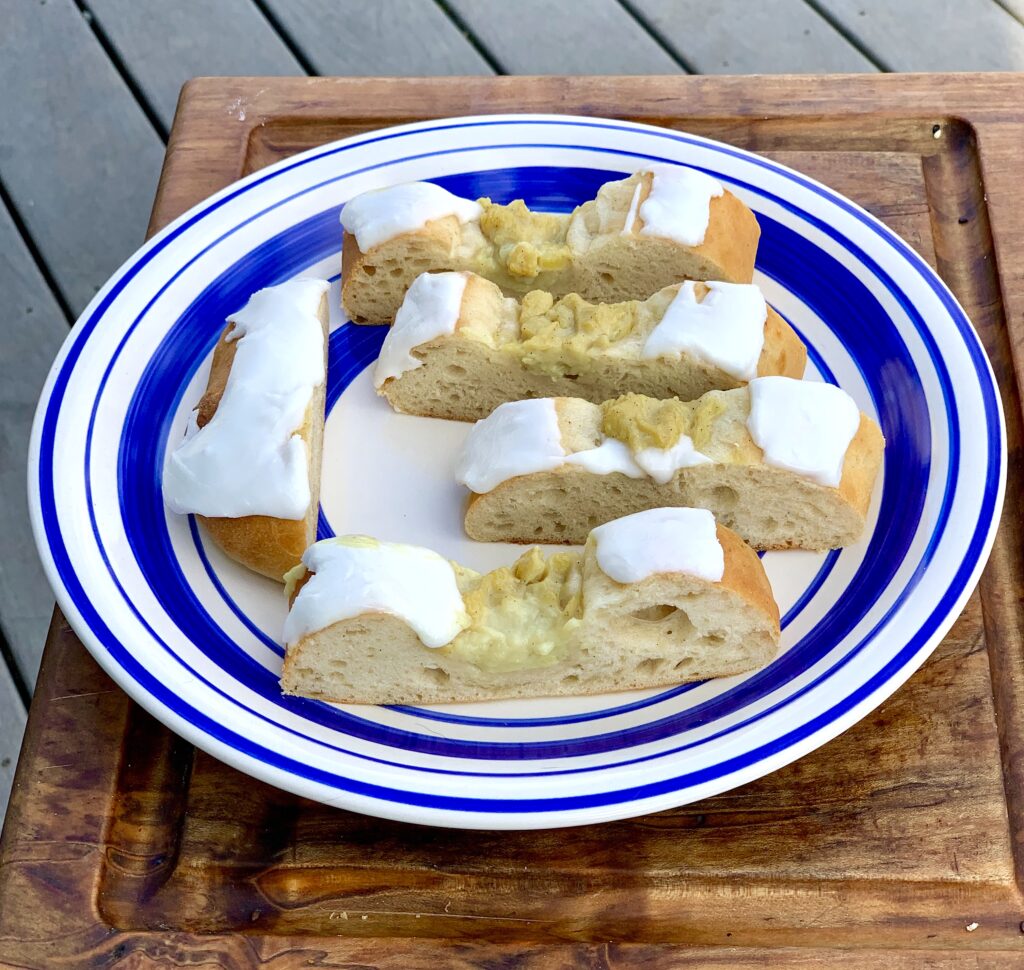With the first day of spring officially here, I start thinking about foods that resembles sunshine. In Norway, we celebrate the return of the sun after a long, dark winter and the northern lights are replaced by the midnight sun. That doesn’t mean we switch out our drinks though, as coffee is just as popular in the summer as it is in the winter.
Norway is a small country with a big coffee culture. I love that about my country. The quality of coffee is high nationwide, and Norwegians like to drink it black. Coffee is our “social drink”, and for most Norwegians, a day without coffee is unthinkable. It’s estimated every Norwegian drinks about 160 liters (about 42 gallons) per year which makes us one of the biggest coffee drinkers in the world, only beaten by the Finns.
I will be writing more about the coffee culture in Norway in a separate post but can never avoid mentioning this important “national” drink when I write about delectable sweets!
With our coffee we love serving all types of baked goods, particularly yeasty, doughy sweet breads, preferably those with a hint of cardamom, either complemented with cinnamon or a vanilla custard.
One of my favorite pastries are “hvetestang”, which is literally translated as “wheat rod”. It is reminiscent of skolebrød or skoleboller, with its center being a vanilla custard and glazed with confectioner’s sugar (and sometimes coconut flakes), only this version is shaped into a long rectangular shape instead of buns.
I remember seeing these in bakeries but also in chapels known as “bedehus”, where as a child I used to go for various things such as choir practice, youth activities and holiday parties.
For hvetestang, I use a similar recipe for my usual cardamom buns, and I’ve been experimenting with different types of vegan vanilla custard recipes. If you’re lazy you can of course buy a ready-made vegan version or use JELL-O powder (which is in fact vegan), just make sure your plant-based milk is chilled and that you use an un-sweetened milk. It’s also important to note that you need to use less milk than what it calls for on the package, otherwise it won’t thicken up. I find that 1 ¼ cup (300ml) instead of the 2 cups (500ml) on the recipe, works well.
Or you could make my recipe for vanilla custard, which is super simple, just adding cornstarch, a little sweetener and vanilla extract to your favorite plant-based milk, and I add a tiny pinch of turmeric to color it a little yellow. I always prefer making things from scratch so this is what I did.
Should you not be a fan of vanilla custard, you can make this pastry with cinnamon, sautéed apples and raisins too, for example – super delicious and commonly seen as well. Other versions are filled with marzipan and raspberry jelly. In other words, there are no limits to what you can fill these pillowy, soft and mouthwatering doughy “rods” with!
I hope you will be tempted to invite some friends or family over, brew a strong pot of black coffee and bake a hvetestang – all in celebration of spring!
NORWEGIAN HVETESTANG
For dough:
1 1/2 cups (3.5 dl) plant-based milk
4 cups or 21 oz (600) grams all-purpose flour
1/2 cup (115 grams) granulated sugar
1 tsp ground cardamom
1 stick or 8 tbsp (113 grams) vegan butter, melted
2 1/4 tsp dry active yeast
1 tbsp ground flax seeds mixed with 3 tbsp water
For Vanilla Custard:
2 cups non-dairy milk
3 tbsp cornstarch
1 tbsp potato starch (or sub 1 more tbsp cornstarch)
4 tbsp granulated sugar or maple syrup
1/8 tsp turmeric (optional)
2 tsp vanilla extract
For Confectioner’s glaze:
2 cups (250 grams) confectioner’s sugar
4-5 tbsp water (approximately)
To make dough:
Combine all the dry ingredients in the bowl of a stand mixer fitted with the dough hook. Heat up the milk in a small pot until it’s about 105-110 degrees Fahrenheit (55 degrees Celcius), and sprinkle in the yeast and let sit for a couple of minutes. Pour it into the dry ingredients and add the flax egg and melted butter. Knead on low-medium for 5 minutes, then another 5 minutes on high speed. The dough should be smooth and elastic when done.
Let the dough rest under a clean towel in a warm spot for about 1 hour until double in size. Prepare two baking sheet by lining them with silpats or parchment paper.
After an hour, divide the dough into three equal pieces and roll out onto a sausage the length of your baking sheets. Using a rolling pin, roll them until they flatten into rectangles. Place on baking sheet, and make a ditch in the middle and fill with the vanilla custard. Let rest again for another 30 minutes.
Preheat the oven to 440 degrees Fahrenheit (220 degrees Celcius). Place the baking sheets in the oven and bake for 10-15 minutes until golden. Remove from oven and let rest on a cooling rack while you make the confectioner’s glaze.
To make vanilla custard:
Pour about 200 ml of the milk into a small bowl and add the cornstarch, potato starch and turmeric, Whisk it together well and set aside.
In a shallow, medium pot, add the remainder of the milk with the sugar or other sweetener of choice, along with the cornstarch mixture. The heat should be on low-medium and make sure to constantly whisk until the mixture starts to thicken. Add in the vanilla extract and cook for another few mixture. The custard should now be thick. Remove from heat and pour into a non-reactive bowl and let cool while you wait for the dough to be ready.
To make confectioner’s glaze:
Combine the water with the confectioner’s sugar and whisk until smooth. I like to add the glaze into a piping bag and line the hvetestenger, but you can also smear it on using a knife or offset spatula.









0 Comments